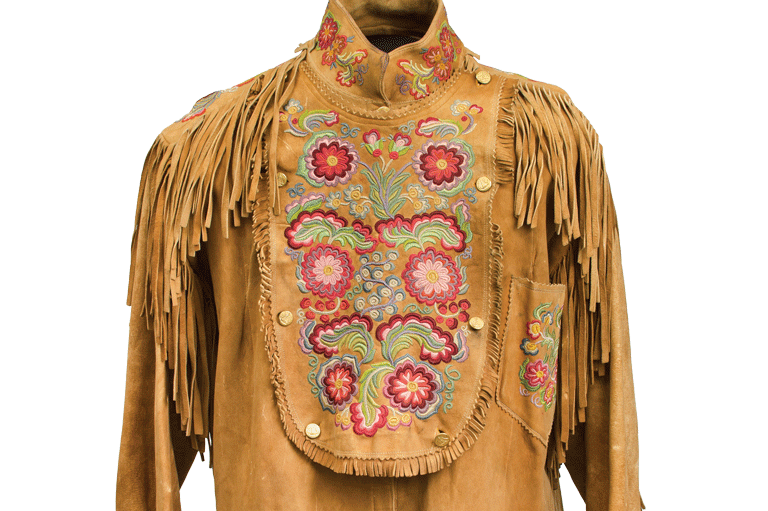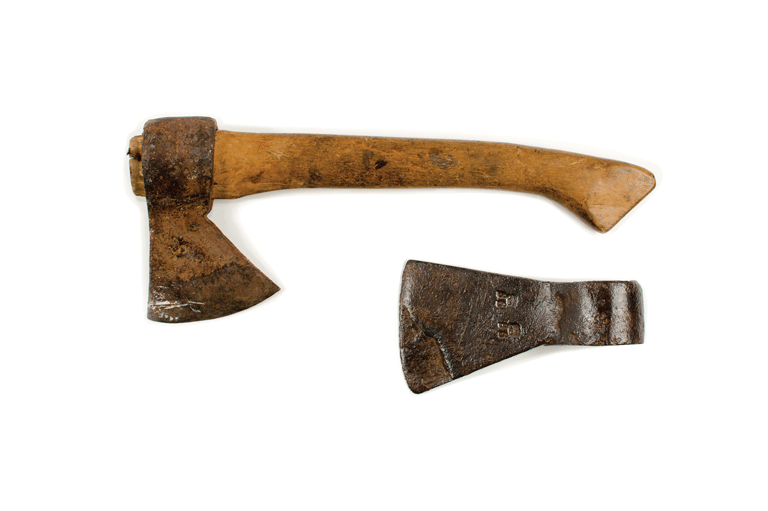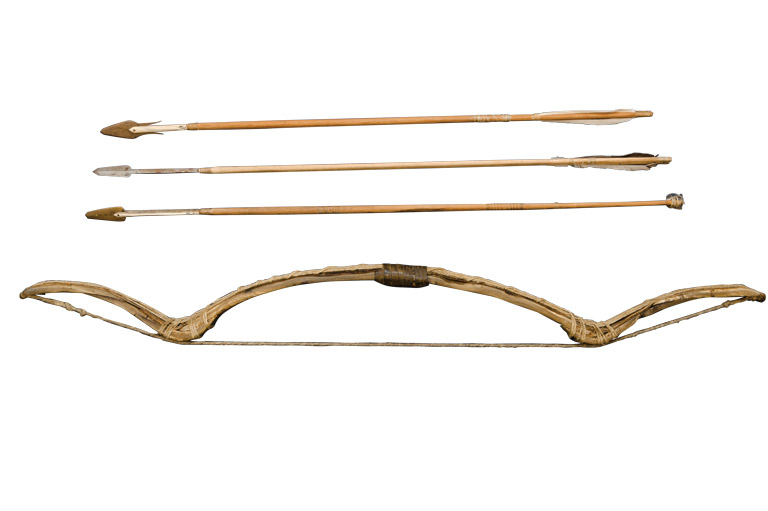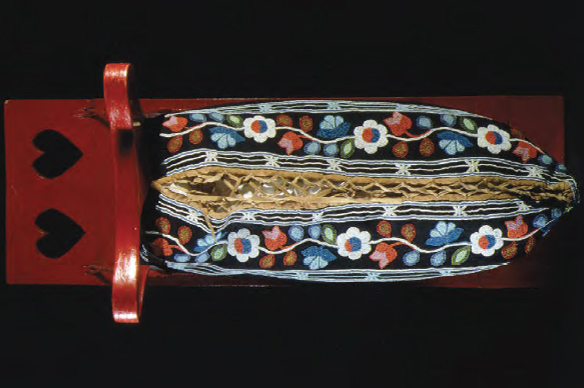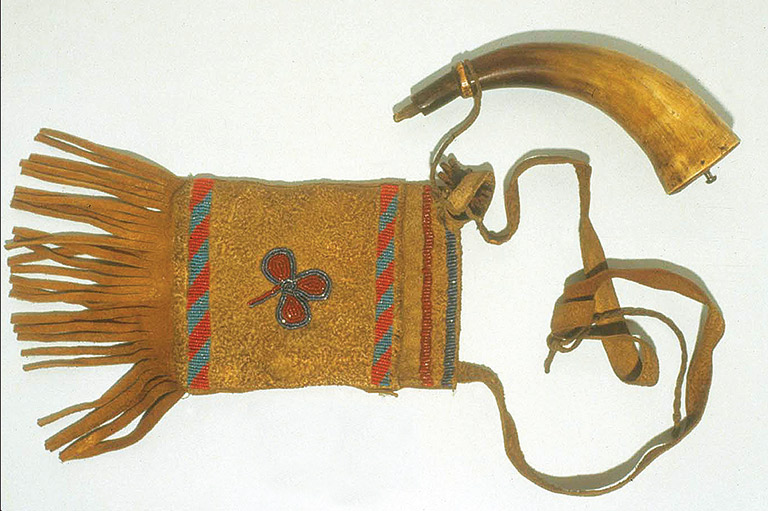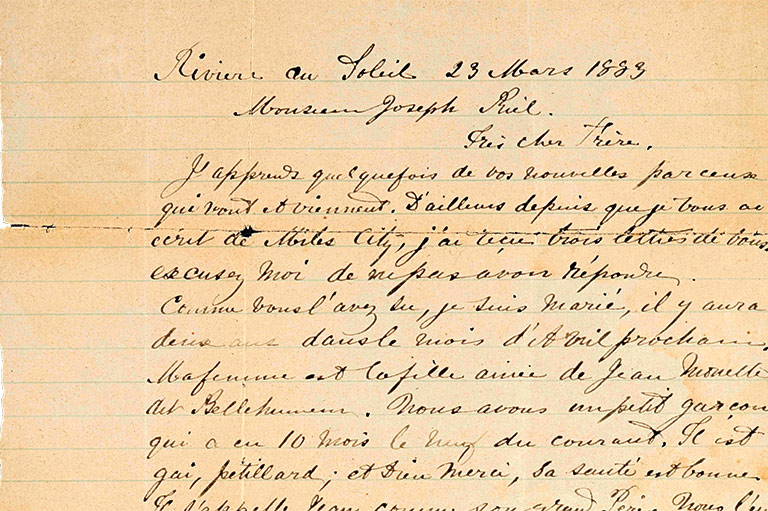Pipe Tomahawk
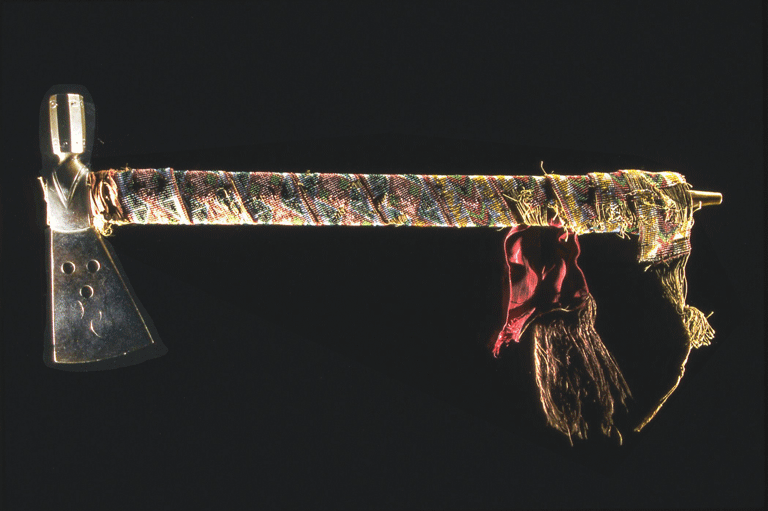
The pipe tomahawk served many purposes. Its hollow wooden handle and the pipe bowl on one side of the head allowed it to be used as a ceremonial smoking pipe, while the other side was a blade, allowing it to become a weapon with just a flip of the wrist.
Believed to have been developed by a blacksmith from England, this dual-purpose invention was highly valued by Indigenous traders. It represented the complex relationship between their communities and Europeans — which included both war and peace.
The nineteenth-century pipe tomahawk pictured here, though, would have been used only for special occasions. It features intricate glass beadwork made by an Indigenous woman on a loom, and its blade has three small holes. Pipe stems were often decorated with carvings, porcupine quills, or horsehair, and more ornate pipe tomahawks were a sign of prestige.
Many were presented as gifts to Indigenous leaders when negotiating trading relationships.
Themes associated with this article
Advertisement

